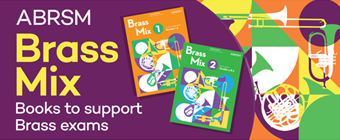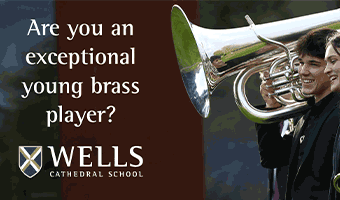

If you take a car journey north from Cardiff towards the Welsh valley town of Merthyr Tydfil, you will see peering from the woodland above you a remarkable, if ridiculously out of place a Gothic revival folly.
Castel Coch is a dazzling piece of high Victorian fantasy created for the third Marques of Bute.
It’s well worth taking a detour to marvel at just what unlimited wealth, but questionable historical accuracy amounts to when there was an open cheque book to plunder. (T.J Powell’s famous march is not connected to its creation and came much later)
However, when you reach Merthyr Tydfil you will also find a castellated fantasy; and the equally preposterous home of ironmaster Robert Thompson Crawshay - another Victorian industrialist of Croesus-like riches and brutal personal traits.
His indulgence though came not with medieval imaginings in bricks and mortar, but in the form of the Cyfarthfa Brass Band. It was no folly.
Oligarch fancy
From 1838 to his death in 1879, his ensemble (the conductor, hand-picked players and even its ‘in-house’ arranger George D’Artney were recruited from afar as London and Paris) became the prototype ‘works’ brass band.
It was the modern day equivalent of a Russian oligarch’s fancy to own a premiership football team.
However, when you reach Merthyr Tydfil you will also find another castellated fantasy; and the equally preposterous home of ironmaster Robert Thompson Crawshay; another Victorian industrialist of Croesus-like riches and brutal personal traits.
Although they rarely competed (they did win Enderby Jackson’s Sydenham contest in 1860), they were arguably the finest brass band of the era; performing special arrangements of operatic excerpts (many, as with Verdi’s ‘Nabucco’, just weeks after their premiere), dances, quadrilles and solos at functions at Cyfarthfa Castle under the baton of conductor Ralph Livesy.
Astonished
On hearing them perform, a journalist from a London newspaper owned and published by Charles Dickens wrote that he was “astonished by their proficiency”.
Following its decline, the original instruments, uniforms and music were locked away and forgotten until rescued almost a century and a half later by the social historian Prof Trevor Herbert.
His aim was to resurrect not only the history of this unique band, but also its sound. With the assistance of trumpeter John Wallace, the result was this remarkable 1996 CD release. It remains a quite astonishing achievement.
His aim was to resurrect not only the history of this unique band, but also its sound. With the assistance of trumpeter John Wallace, the result was this remarkable 1996 CD release. It remains a quite astonishing achievement.
Aural DNA
Not only are the performances on period instruments equally remarkable in their virtuosity (as are the arrangements transcribed from the original repertoire books), they also reveal the aural DNA of the Victorian brass band in all its developing character.
The keyed bugles, cornets, ophicleides and Viennese rotary valve instruments produce a light, lean, textured timbre that bridge the last vestige influences of woodwind blends in the writing and the nascent ensemble tonality of the Darwinian emergence of the all conquering Sax species of piston instrumentation.
And although the dynamic range has an understandably limited spectrum, the colouring throughout the extensive notational range is a cultured delight. Those pioneering performers must have been quite exceptional players as the technical demands and effects are extensive and at times startling.
Looking back on ledger of his life, and despite his own inexcusable failings as a man, even St Peter may have congratulated him on his brass band before deciding whether or not to let him rest in peace for all eternity.
Listening to the ‘Cyfarthfa Castle Quadrilles’, ‘Nabucco’, ‘Zampa’ and ‘L’Irato’ thrillingly transport you back in time, whilst Joseph Parry’s ‘Tydfil Overture’, written around 1874, reminds you that major original works for the brass band medium were being created almost 40 years before ‘Labour & Love’.
Each piece opens an elegant musical door to the past, although Paganini’s ‘Carnival of Venice’ wouldn’t sound out of place at the Brass in Concert championship and John Wallace’s rendition of ‘The Whirlwind Polka’ is a gem of stylish swagger.
Forgiven
On his death, Richard Thompson Crawshay was buried in a grave inscribed with the simple epitaph; ‘God Forgive Me’.
Looking back on ledger of his life, and despite his own inexcusable failings as a man, even St Peter may have congratulated him on his brass band before deciding whether or not to let him rest in peace for all eternity.
Iwan Fox
To purchase: https://www.wyastone.co.uk/the-origin-of-the-species-virtuoso-victorian-brass-music.html
Play list:
1. Nabucco (Verdi)
2. Carneval de Venice (Paganini)
3. The Lost Chord (Sullivan)
4. The Whirlwind Polka (Levy)
Soloist: John Wallace
5. My Daughter’s Schottische (Montgomery)
6. Triumphal March (Sainton-Dolby)
7. L’Irato (Mozart)
8-12. Cyfarthfa Castle Quadrilles I-V (Bawden)
13. Tydfil Overture (Parry)
14. Zampa (Herold)
15. Nibelungen March (Wanger/Sonntag)









